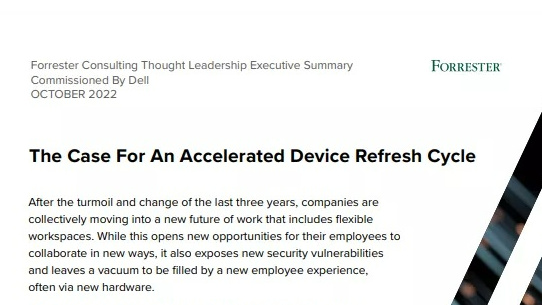ABW: Enabling better collaboration in the workplace
Why the latest buzzword measures productivity instead of hours spent in the office

Technology may have revolutionised the workplace, yet in terms of the physical office layout there has been very little change in the past hundred and fifty years. However, now we’re in the days of BYOD there is a far greater recognition of the importance and impact of effective collaboration, has the traditional office layout finally reached its sell-by date?
The latest buzzword which is set to become the main driver for better collaboration is Activity Based Working (ABW). The principle is simple. ABW means that work would be based on an activity rather than a location, measuring people’s productivity instead of their hours in the office. In essence, it involves looking at how people work, where they work most effectively and investing time and money in making the best of that environment.
ABW may be an emerging trend and a vital step for companies to take towards a future of collaboration, however it is by no means a new concept. In fact, it was back in the 1980s when an article in the Harvard Business Review laid down the principles of this new way of working. Cited in the report, the ABW theory recognised that during any typical working day individuals perform a number of tasks, and each of these activities has a different requirement for space, environment, tools and facilities. An ABW office is designed using a granular understanding of the variety of activities employees do, and then creating spaces and environments for each in these tasks in proportion to their frequency.
The financial benefits for companies who choose to adopt ABW are complex, yet the scope for reducing money invested in accommodating an office-based workforce without a reduction in headcount is an attractive proposition to any business. One of the clear winners would be a decrease in real estate overheads, which could typically be up to 30 percent. Organisations who have led the field in ABW, such as Microsoft, Interpolis and BT, have all seen 30 percent cost reductions, and companies such as Macquarie Bank has seen a 23 percent increase in building capacity.
The less tangible benefits are those that will transform the organisation in the long term, businesses can operate more efficiently and the innovative infrastructure will support and bolster collaboration. Corporate agility will become one of the key drivers for collaboration – speed to market, speed of decision making between dispersed teams and the ability to remove downtime and make better use of expertise, will all drive collaborative best practice.
In many ways, there has never been a better time to introduce ABW. Technology has already paved the way for more flexible working, and despite the traditional office layout, employees no longer inhabit their corporate desks as frequently. Recent surveys show that in the average workplace, desked areas represent 60-70 percent of an office footprint, yet only 45-50 percent of these desks are occupied at any one point in time. Clearly, a new approach to the workplace is becoming inevitable, and ABW based around teams and tasks, not departments and functions, is the future for agile organisations.
The idea of ABW seems logical and straightforward but how can organisations adopt this new way of working? Firstly, companies need to decide whether ABW is the right workplace strategy for them, what style of ABW to adopt to suit their business functions and how far to push the boundaries. The initial steps would require a fundamental rethink of the need for and provision of the workspace, along with a detailed understanding of the workforce – by profiling and identifying discrete cohorts. Typical working days would need to be mapped and then a range of task-based settings with the appropriate enabling technologies delivered.
Stay up to date with the latest Channel industry news and analysis with our twice-weekly newsletter
There is not a one-size-fits-all solution to ABW, rather adaptation is needed based on size, structure, location and business objectives. Whether the result is a high tech space with state-of-the-art technology or a sparse environment with phone-free zones and noisy café style settings, an ABW workplace is a tapestry of inspiring space and one that provides the ultimate route to better collaboration.
Martin Large is CEO of distributor Steljes
-
 The UK AI revolution: navigating the future of the intelligent enterprise
The UK AI revolution: navigating the future of the intelligent enterpriseAs AI reshapes industries and societies, decision-makers in the UK face a critical choice: build a sovereign future or merely import it.
-
 Turning the UK AI revolution into a sovereign reality
Turning the UK AI revolution into a sovereign realityThe UK AI Revolution documentary series posed difficult questions about AI’s hype, control, and future. Now, IT leaders must find the architectural answers
-
 'Digital hide-and-seek': Workers are wasting hundreds of hours a year sourcing the information they need to carry out their role
'Digital hide-and-seek': Workers are wasting hundreds of hours a year sourcing the information they need to carry out their roleNews Knowledge workers globally are wasting a quarter of their working week tracking down information, new research from Atlassian has revealed.
-
 Untethered: How CIOs and CISOs are paving the way for the new hybrid workforce
Untethered: How CIOs and CISOs are paving the way for the new hybrid workforceWhitepaper Effective techniques to transition from exposed legacy infrastructure to an effective zero trust strategy
-
 Unlocking the power of your digital services
Unlocking the power of your digital servicesSponsored Businesses have invested significant cash into technology since COVID-19, but are they really getting their money's worth?
-
 Delivering fast and secure digital experiences for the modern hybrid workforce
Delivering fast and secure digital experiences for the modern hybrid workforceWhitepaper A new approach to digital experience monitoring that can monitor the health of all systems
-
 Collaboration is the glue that holds your business together
Collaboration is the glue that holds your business togetherSPONSORED A combination of productivity tools and cloud telephony can enable the best from your workforce
-
 The future of work and the forgotten workforce
The future of work and the forgotten workforcewhitepaper How to deploy a mobile-first strategy so no one gets left behind
-
 The case for an accelerated device refresh cycle
The case for an accelerated device refresh cycleWhitepaper Achieving a more cost-effective device lifecycle overall
-
 Employees are choosing how they work
Employees are choosing how they workWhitepaper And with the right secure digital strategy, this could be a great thing for your business: today and far into the future